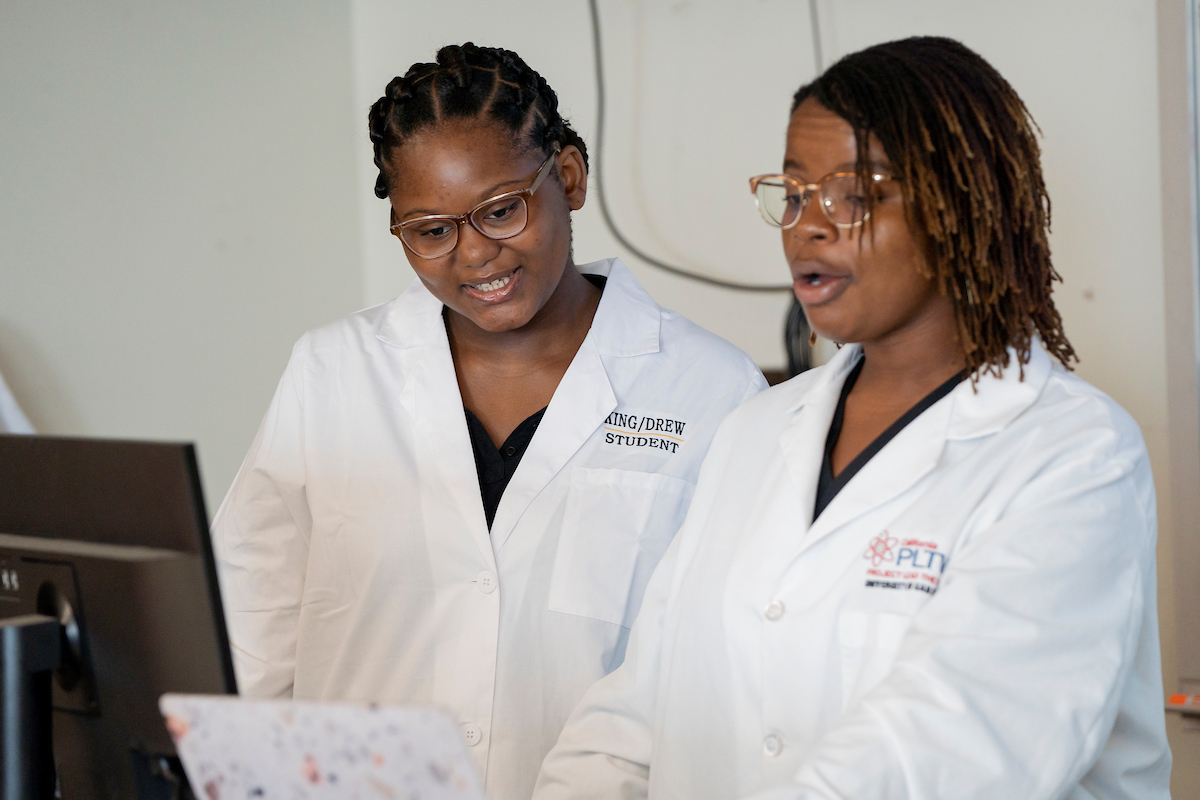
by Amy Kim, Ph.D, Physical Chemistry and Executive Director of EnCorps, Inc.
Promises Unkept
We are failing our students. Our public education system is meant to provide an academic foundation that makes lifelong inquiry, problem-solving, and success possible. But US public schools have not delivered on that promise for many, especially concerning STEM.
The Nation’s Report Card (2022), shows 26% of US 8th graders are math proficient. Black and Latinx students have been failed even worse, with 9% and 14% respective proficiency rates (1). Only 13% of National School Lunch Program-eligible students are proficient, whereas that figure nearly triples (38%) for students from higher income households.
Public schools are not adequately preparing the next generation—especially students who are low-income and of color—to master STEM education basics, harming students’ chances to excel in future STEM careers. Consequently, STEM fields continue to lack diversity, with a white male majority in roles with significant leadership, tenure, and decision-making influence (2). Despite some recent progress engaging girls in STEM learning, women remain underrepresented in STEM careers partly due to a dearth of women role models (3).
Education leaders are now sounding the alarm on STEM’s lack of diversity. I hear the call repeatedly as Executive Director of EnCorps, Inc., a California-based 501(c)(3) that advocates for STEM educational equity, and it resonates with my past experience as one of few women in my graduate program in chemistry. To improve STEM diversity, K-12 public education must be the starting place for transformation.
The Case for Diversity in STEM
Our worldview reflects the ways we grew up. Because STEM is dominated by a single race and gender, it is significantly shaped by the composite of that particular experience. We miss key opportunities to identify issues uniquely impacting other communities, especially germane to protecting human lives.
In several vaccination trials, such as the Covid-19 trials, we failed to enroll any diverse subjects—including pregnant people and those marginalized because of their race or class (4). In automobiles, women suffer injuries or die more often because crash dummies with men’s average stature are the only ones mandated for testing(5).
Increasing STEM diversity will help us prioritize equity not just as an occasional nice-to-have, but as an urgent, life-saving imperative. It will encourage better science, ranging from dosing implications to engineering technology that determines whether a mother makes it home to her family.
We need more racially, economically, and gender diverse STEM-professionals in solving today’s challenges while building the pipeline for tomorrow. Unless we educate students well, hiring for diversity will continue to be performative rather than a sincere endeavor to impact field leadership.
Putting Scientists in Our Schools and At the Heart of the Solution
Given our experience, training, and problem solving aptitudes, who better to solve STEM’s diversity crisis than scientists?
The nonprofit organization I lead, EnCorps, connects STEM professionals with middle and high schoolers to counter systemic injustice preventing children in under-resourced communities from accessing high-quality STEM education.
The EnCorps STEM Teachers Program® supports STEM professionals committed to closing the equity gap by marrying theory with real-world classroom practice. EnCorps Fellows teach STEM subjects ranging from physics and math to computer science, and serve as STEM role models.
Through the EnCorps STEMx Tutors Program, STEM professionals volunteer to tutor middle school math online. They help students make notable strides in learning, increasing math skills and confidence prior to high school. Our 2022-23 data shows 84% of students increased math proficiency because of their tutor.
EnCorps not only brings more STEM professionals, many from diverse backgrounds, into schools to help curb the national STEM teacher shortage (6), but our teachers and tutors also bring real-world examples to the classroom to make STEM learning come alive. They are inspiring, life-changing mentors whose presence empowers and sparks STEM interests, helping students confidently pursue STEM coursework and careers they might not have otherwise considered.
We need STEM professionals to shape US public education where we have the best chance to profoundly impact the field and the issues of our time. As EnCorps Fellowship graduate LaTeira Haynes put it, “we have all these scientific minds not being tapped into because students might not be pointed in that direction. One of these kids could cure cancer, solve the world’s great problems.”
They just need someone to ignite the spark and light the way.
Conclusion
It’s time to answer the urgent call of this moment and do what STEM professionals do generously and best: use their brilliance, passion, and experience to tackle big challenges and shape our world for the better.
 Connect with Amy on LinkedIn.
Connect with Amy on LinkedIn.
###
Sources:
1. National Assessment of Educational Progress. (2022). The Nation’s Report Card. Retrieved October 29, 2023, from https://www.nationsreportcard.gov/mathematics/nation/achievement/?grade=8. 2 Fry, R., Kennedy, B., & Funk, C. (2021, April 01). STEM Jobs See Uneven Progress in Increasing Gender, Racial and Ethnic Diversity. Pew Research Center. https://www.pewresearch.org/science/2021/04/01/stem-jobs-see-uneven-progress-in-increasing-gender-racial-and-ethnic-diversity/ 3 Piloto, C. (2023, March 13). The Gender Gap in STEM: Still Gaping in 2023. MIT Professional Education. https://professionalprograms.mit.edu/blog/leadership/the-gender-gap-in-stem/ 4 Tirrell, M., Lovelace Jr., B., & Taylor, H. (2020, July 13). Early coronavirus drug trials tested vaccines mostly on White people; next phase aims for diversity. CNBC. https://www.cnbc.com/2020/07/31/early-coronavirus-drug-trials-tested-vaccines-mostly-on-white-people-next-phase-aims-for-diversity.html 5 VERITY NOW — A Coalition for Vehicle Equity in Transportation. (n.d.). Retrieved October 29, 2023 from https://www.veritynow.org. 6 Jones II, A. (2023, May 11). Why there’s a special education and STEM teacher shortage and what can be done. ABC News. https://abcnews.go.com/US/states-facing-special-education-stem-teacher-shortages/story?id=98775708
